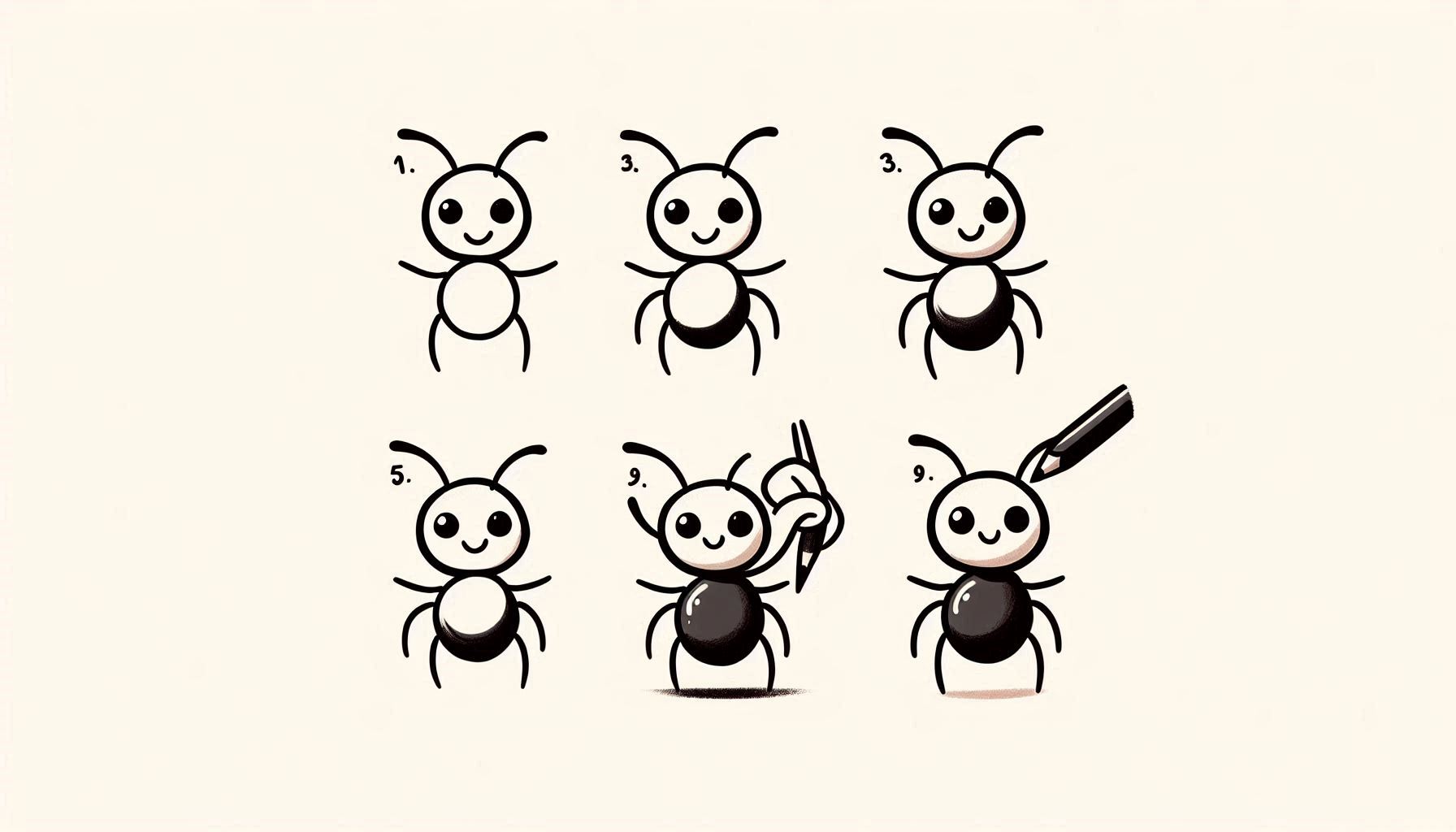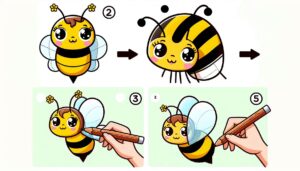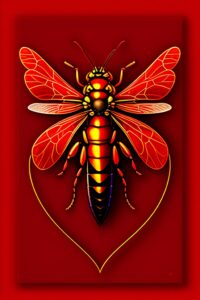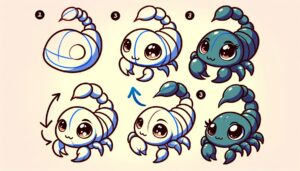Exploring the unique features of hardworking insects can make drawing an ant an exciting activity. Ants possess fascinating characteristics with their segmented bodies, long legs, and antennae. In this guide, we’ll take you through the process of drawing an ant, paying close attention to its unique characteristics and incorporating imaginative elements. Let’s embark on this small yet powerful artistic journey!
The Intriguing World of Ant Anatomy
Ants possess a captivating anatomy, consisting of a body divided into three segments – the head, thorax, and abdomen. They also have lengthy legs and noticeable antennae. By familiarizing yourself with these features, you’ll be able to produce drawings that are both precise and captivating. By paying attention to these details, one can truly admire the intricate and captivating nature of these hardworking creatures.
The Joy of Capturing Distinctive Characteristics
When it comes to drawing an ant, it’s all about capturing its distinct characteristics, like its segmented body and long, slender legs. This can be an enjoyable challenge that improves your drawing skills and ability to focus on the little things. The more accurately you portray these characteristics, the more lifelike and captivating your ant drawing will be.
Discovering the Fascinating World of Ants Through Art
Ants come in a wide range of species and sizes, each with their own distinct characteristics. Exploring the world of ants through drawing can be a fascinating way to discover their incredible diversity and the various patterns and colors they possess. This theme highlights the educational aspect of art and the opportunity to explore new aspects of nature.
Steps: Drawing an Ant
First, begin by drawing the head.
Begin by sketching a petite, curved form to represent the ant’s head. Place two large, rounded eyes near the top of the head. Sketch two elongated, gracefully arched lines that extend from the upper part of the head to represent the antennae. The antennae should have a segmented structure and a slight curve. Include a small, curved line or a pair of tiny dots close to the lower part of the head to represent the mandibles (mouthparts).
Next, we will move on to drawing the thorax.
Create an oval or rounded shape that is slightly larger than the head for the thorax. Ensure a seamless connection between the thorax and the head with a smooth curve or line. The thorax is typically wider than the head and serves as the point of attachment for the legs.
Step 3: Sketch the abdomen
Add a bigger, curved form to the rear of the thorax to create the abdomen. The abdomen should have a size that is visibly larger than the thorax, with a smooth and gently curved shape. It would be helpful to include some light lines to clearly show the divisions.
Step 4: Attach the legs
Ants typically have six legs that are elongated and segmented. Sketch three sets of legs protruding from the sides of the thorax. The front legs should be shorter and may have a few segments, while the middle and hind legs are longer and sturdier. Ensure that the legs have a gentle curve and tapered tips.
Step 5: Draw the Mandibles
Ants possess impressive mandibles (jaws) which enable them to effortlessly grasp and transport various objects. Sketch two curved lines that extend from the front of the head to depict the mandibles. The ideal shape would have a slight curve and gradually narrow to a sharp point.
Step 6: Define and perfect the form
Consider using a darker pencil or pen to enhance your sketch and perfect the form of the ant. Refine the contours of the head, thorax, abdomen, and legs. Ensure that the antennae, legs, and mandibles are clearly distinguishable. Remove any unnecessary guidelines or overlapping lines to tidy up your drawing.
Step 7: Enhance the Visual Appeal
To enhance the texture and realism of your ant drawing, consider incorporating delicate lines and shading. Use gentle strokes to depict the intricacies of the form and its divisions. Enhance the artwork by incorporating shading that brings out the intricate details of the ant’s exoskeleton. Be mindful of the areas of light and shadow in your drawing to give it more depth and dimension.
Step 8: Add some color to your ant.
Now it’s time to add some vibrant hues to your ant! Ants typically come in shades of black, brown, or reddish-brown. Choose colors that you enjoy using to add some depth and dimension to the body, creating a more realistic appearance. Lighter shades can be used for highlights, while darker shades can be used for shadows. Enhance the antennae and legs with vibrant hues to bring your drawing to life.
Theme 1: Exploring the Intricacies of Ant Anatomy
Exploring the anatomy of an ant through drawing allows for a fascinating examination of its segmented body, legs, and antennae. Understanding these features enables you to craft a thorough and authentic portrayal. Understanding the intricacies of ant anatomy can improve both your artistic abilities and your understanding of these captivating creatures.
Theme 2: Embracing the Joy of Capturing Distinctive Characteristics
The distinctive characteristics of an ant, like its elongated legs and segmented body, provide an enjoyable challenge for artists. Mastering these details requires precision and careful observation, making it an excellent exercise for enhancing your drawing abilities. Have fun capturing these unique characteristics in your artwork.
Theme 3: Discovering the Fascinating World of Ants Through Art
Exploring the diversity and unique characteristics of various ant species through drawing can be a fascinating experience. Experimenting with a variety of colors and patterns can add visual interest and educational value to your artwork. This theme emphasizes the excitement of exploring different elements of nature through artistic expression.
In summary
Creating a drawing of an ant can be a fulfilling and educational activity that lets you appreciate the intricate details and fascinating nature of these remarkable creatures. By following the steps in this guide and paying attention to their anatomy, distinctive characteristics, and vibrant colors, you can create a meticulous and captivating ant drawing. Embrace the joy of creating and let your imagination soar as you bring this captivating creature to life on paper!
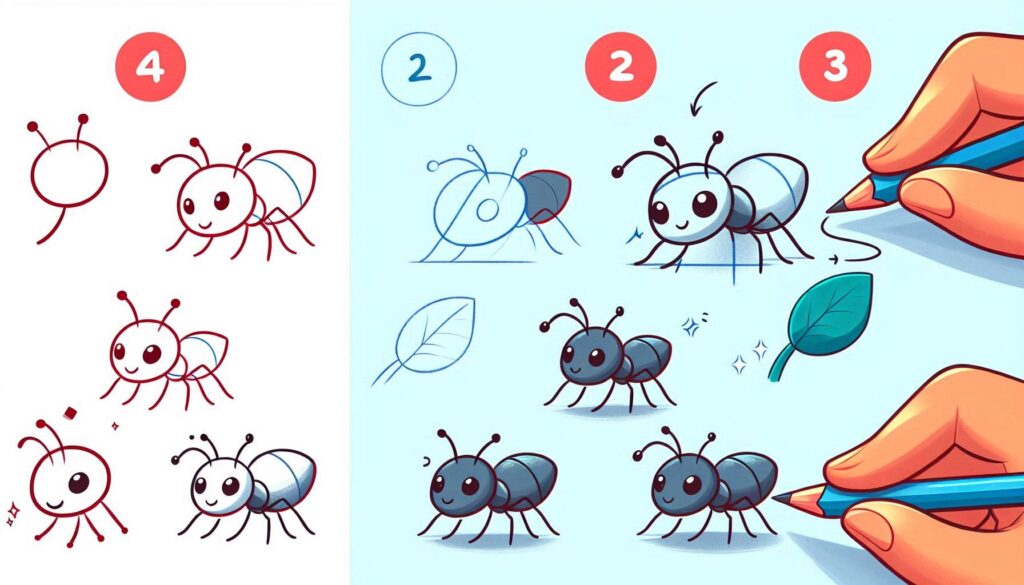
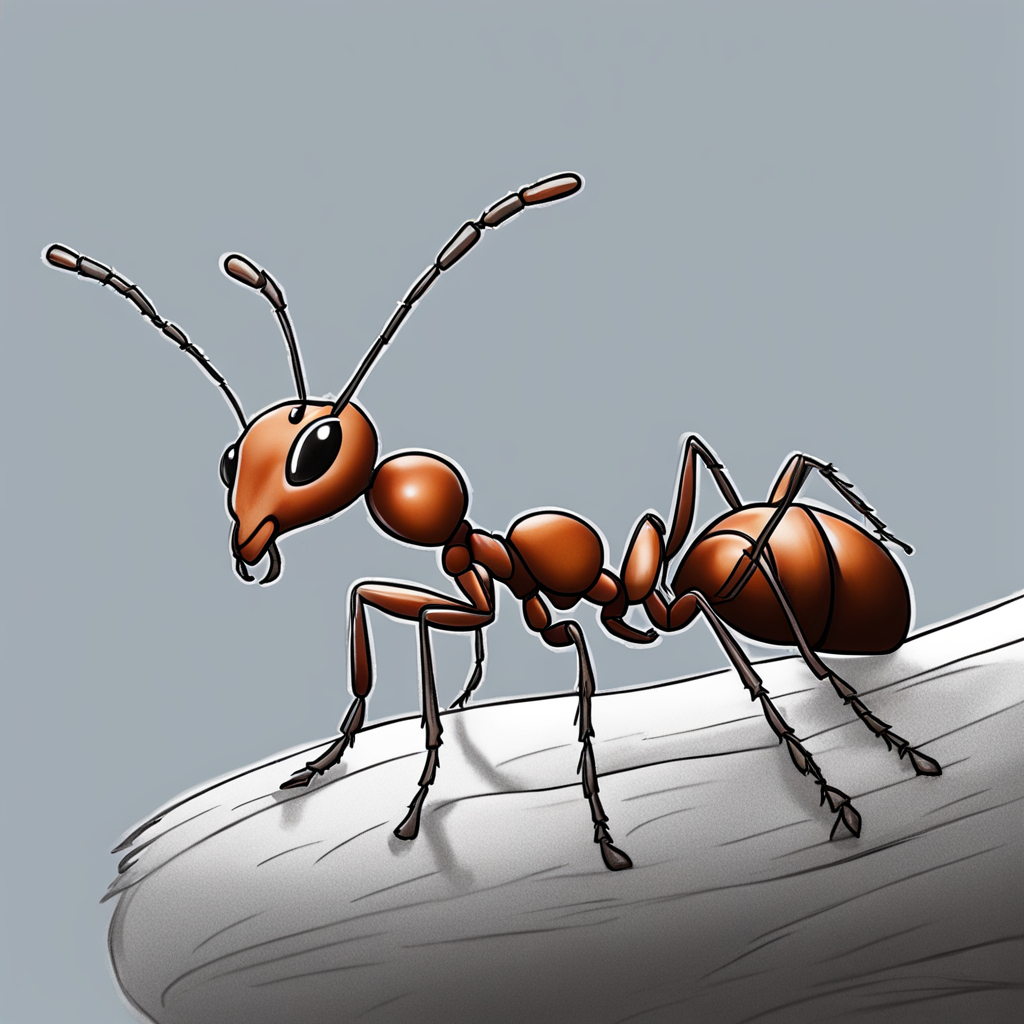
Check out this super fun and simple guide to learn how to draw a guppy with easy step-by-step instructions! This fun tutorial provides easy steps, allowing young creators to dive into their imagination while discovering these vibrant fish!

